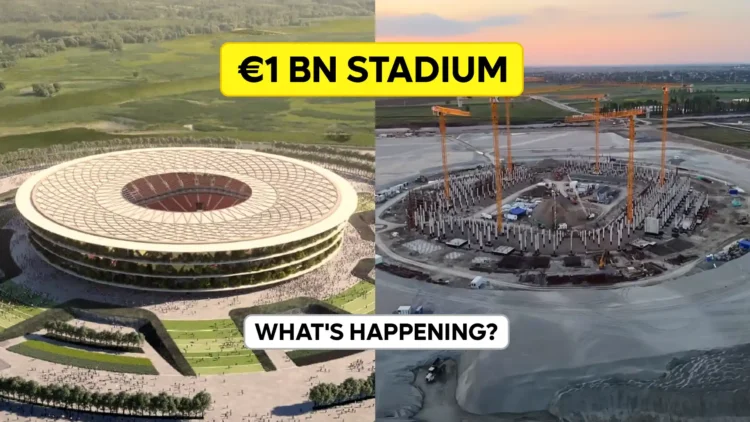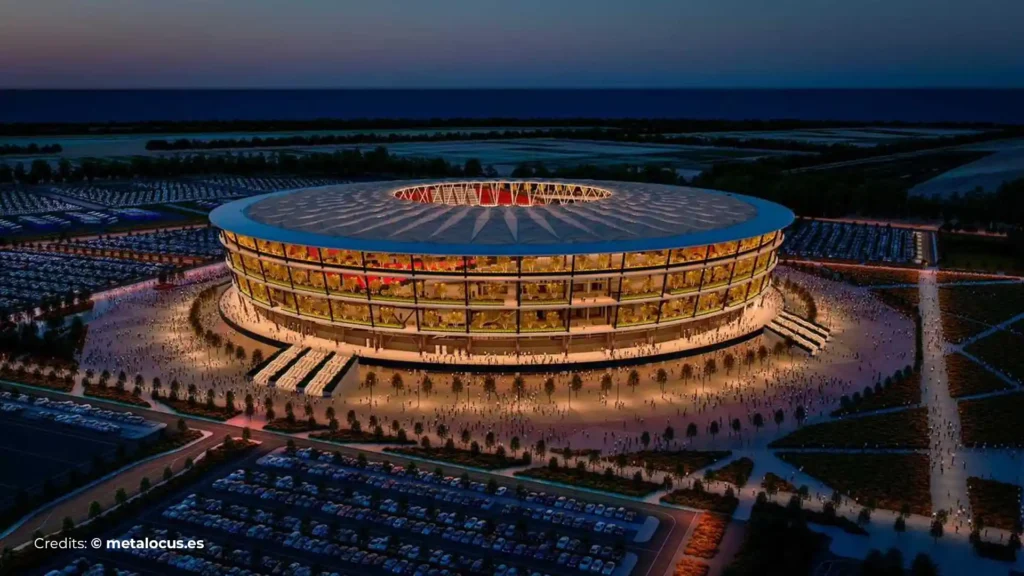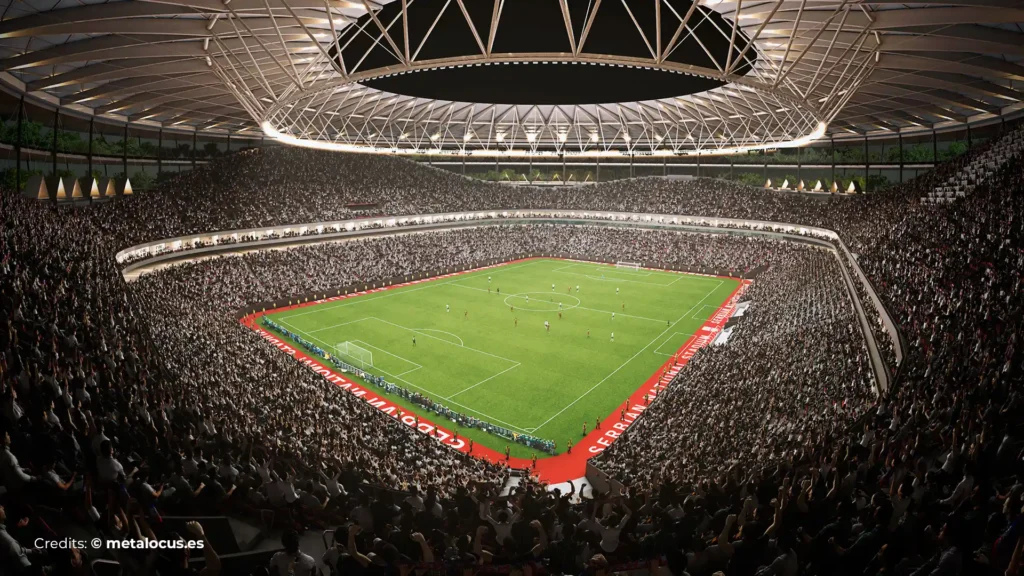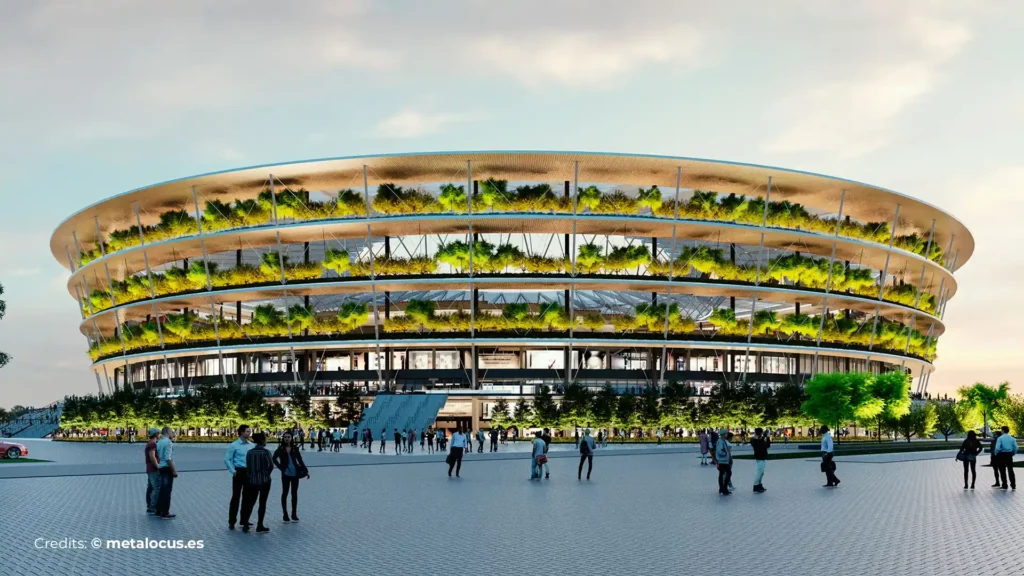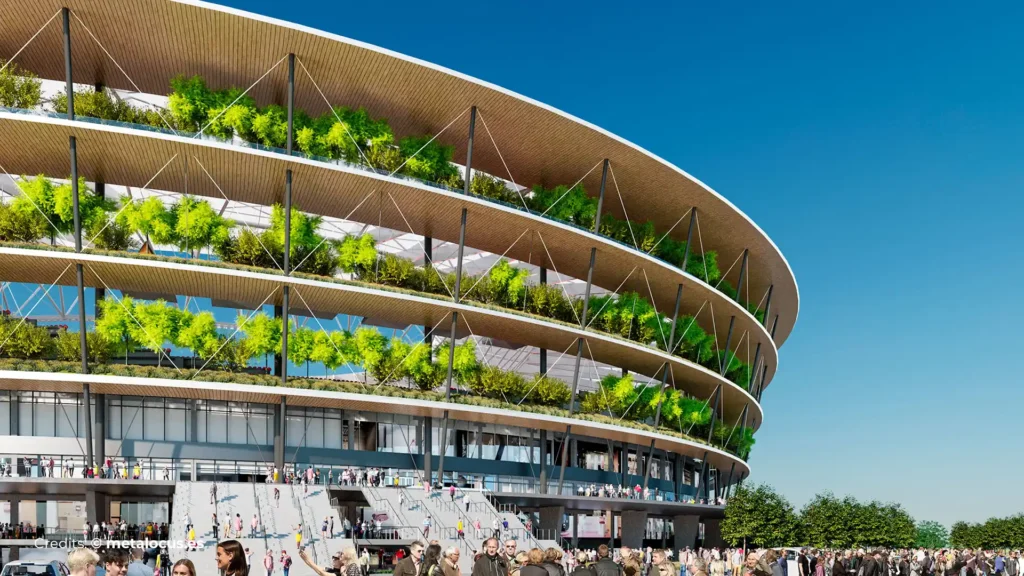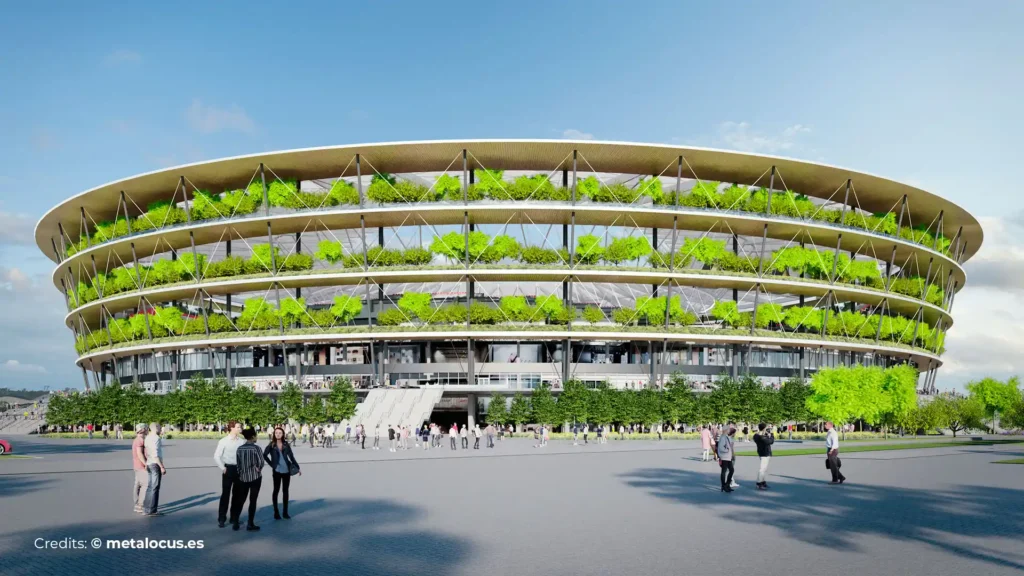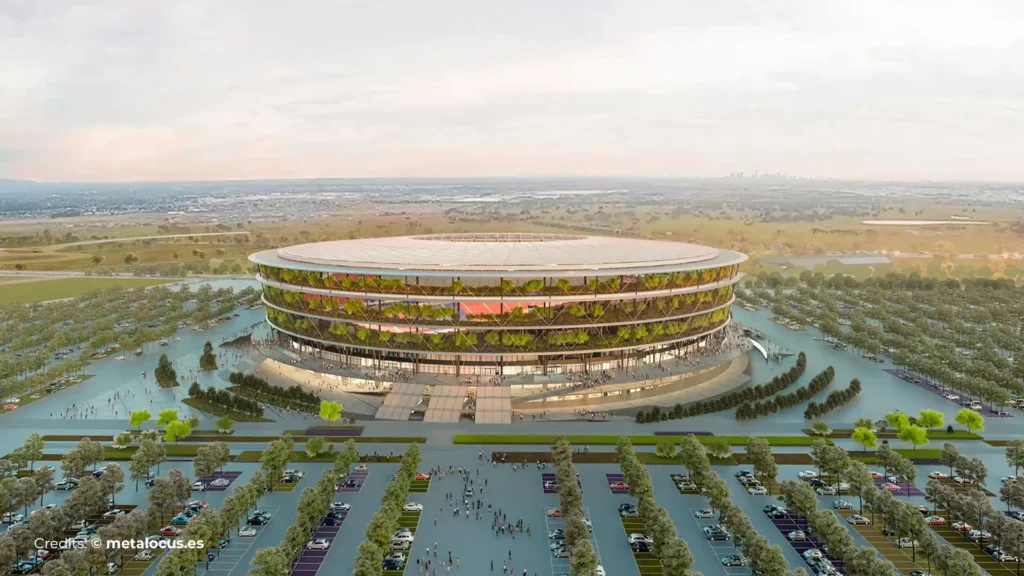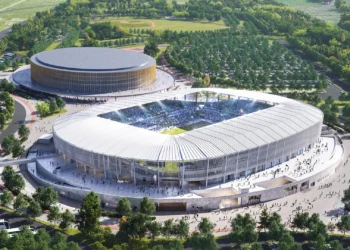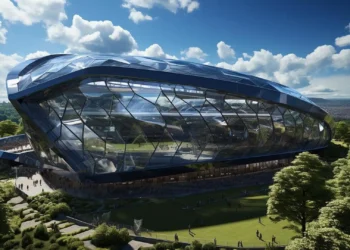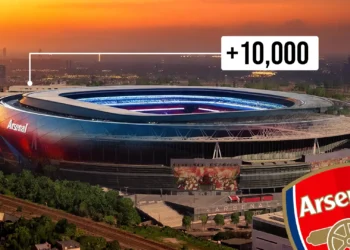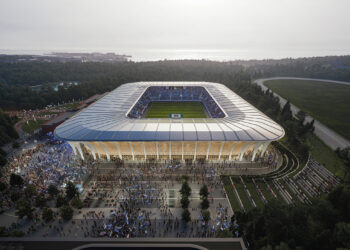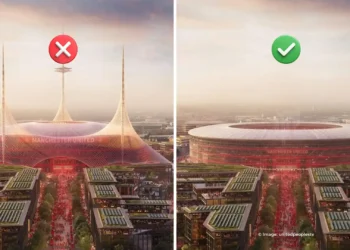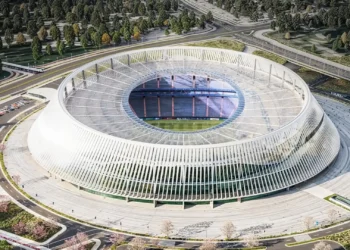Serbia’s New Stadium in Belgrade – A Symbol of Ambition or a Giant Financial Pit?
When Serbia announced plans to build a new national stadium in Belgrade, the project was greeted with enthusiasm, national pride and high expectations. But today, more than three years after the start of construction, many call the project “a monument left in the pit” – a stadium that promised glory, but for the time being offers only staggering costs and slow progress.
A Giant Project with European Ambitions
Located in the Surcin area, Serbia’s new stadium was conceived as a modern answer to the lack of top-level football infrastructure. It would have a capacity of around 52,000 seats, with UEFA standards for hosting major international matches, including the Champions League and European Championship finals.
3D renderings of the project showed a futuristic arena, with elegant architectural lines and modern technology.
Extremely High Cost: From 250 to over 1 billion Euros
Initially, the Serbian government announced that the stadium would cost around 250 million euros. But according to recent media sources and publicly available documents, the cost has already exceeded 400 million euros, and the project is not even 10% complete.
In a country where many citizens face daily economic challenges, such a large investment for a stadium that is still unknown when it will be completed has aroused much anger and skepticism.
Slow Pace: Why is the Work Dragging?


SERGIO_SPECTOR
Works started in the end of 2023, but by mid-2025, progress has been disappointing. According to official reports, only parts of the concrete structure have been built, with many areas still looking like a construction pit.
The reasons? There are several:
Frequent changes to the project and new architectural requirements that have caused delays in deadlines.
Problems with tenders and contractors, including late payments and a shortage of labor.
Unexpected costs for surrounding infrastructure, including roads, power lines, and sewers, that were not originally planned in the budget.
Growing Criticism: Symbol of Propaganda or Investment for the Future?
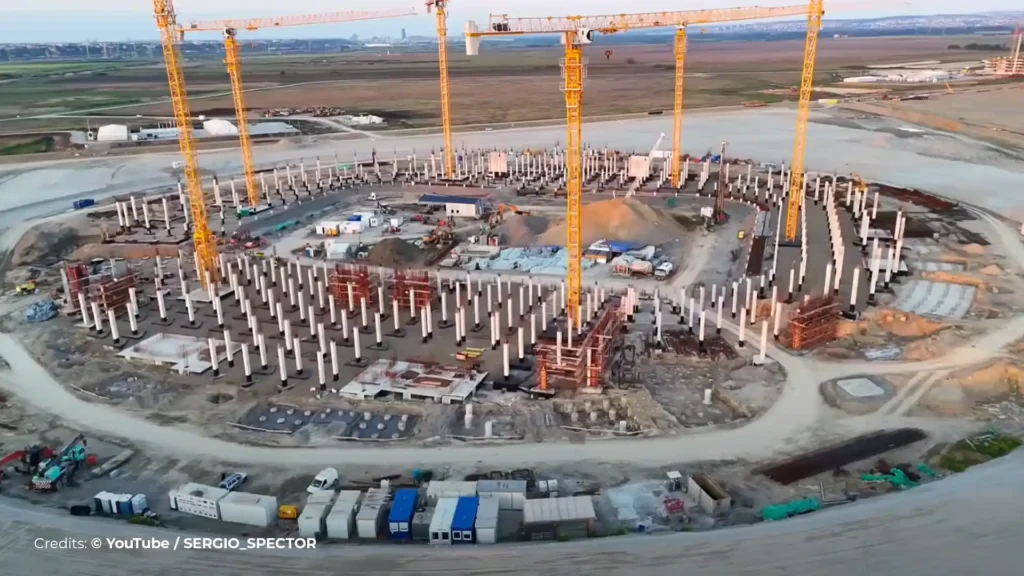
The stadium is being portrayed by some as another government attempt to build a symbol of national pride, but in practice it is turning into a monument to mismanagement and overspending.
Opposition parties in Serbia have sharply criticized the project, calling it a “wrong priority” in a country where hospitals, schools, and roads are in urgent need of investment. “A country that builds a stadium before it has a rule of law is going down the wrong path,” an independent political analyst told local media.
An Unclear Future
Officially, authorities are still defending the project and promising that the stadium will be completed “by 2026.” But many construction experts and media outlets say the realistic deadline could be 2028 or later, unless the current pace is significantly accelerated.
Meanwhile, the playing field is missing, the stands are just concrete skeletons, and the exterior of the stadium has not even begun to take shape.
A Stadium That Requires Patience… and a Lot of Money
Serbia’s new stadium would undoubtedly be a magnificent addition to the region’s sports infrastructure. But for now, it has become a cautionary tale for any country that embarks on ambitious projects without thorough planning and rigorous oversight.
For now, more than a sports arena, it is an arena of debate: about national priorities, about public spending, and about what a small country can – and should – build in the name of national pride.

